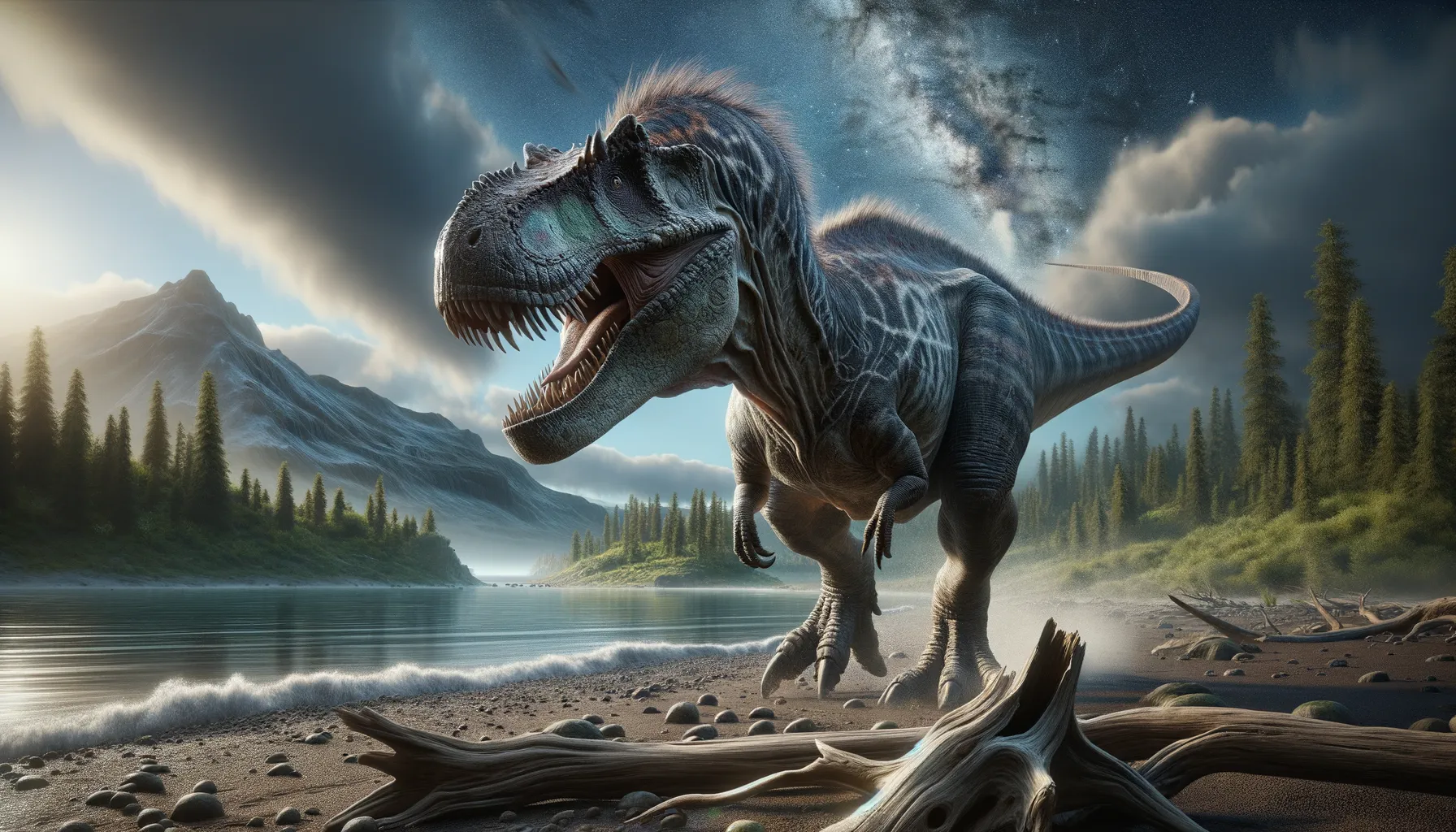
Tarascosaurus
Fierce predator of Cretaceous France.
Period
Cretaceous
Length
Roughly 8 meters in length.
Height
Estimated around 2.5 meters tall.
Weight
Approximately 1 ton.
Tarascosaurus was a carnivorous dinosaur that roamed Europe during the late Cretaceous period. Its fossils suggest it was a formidable predator with a robust build. As a theropod, it was likely bipedal, moving on two hind legs while using sharp teeth to hunt prey. Despite its intimidating size, much of its life remains a mystery, providing tantalizing hints of ancient European ecosystems.
Diet
Tarascosaurus was a carnivore, primarily feeding on other dinosaurs. It likely hunted smaller herbivorous species and possibly scavenged when predation opportunities were scarce.
Hunting
This dinosaur used its powerful jaws and teeth to take down prey. It likely relied on stealth and surprise, given its build was more suited to short bursts of speed rather than endurance runs.
Environmental challenges
Living in the late Cretaceous period, Tarascosaurus faced challenges such as climatic fluctuations and competition for food resources. Its environment was a mix of lush vegetation and arid spaces, making survival dependent on adaptability. It had to navigate through a landscape that was both dynamic and sometimes harsh in terms of weather and resource availability.
Speed
Likely not very fast, estimated at 20 km/h.
Lifespan
Potentially around 20 to 30 years.
First discovery
Unearthed in southern France in the 1990s.
Fun Facts
- Tarascosaurus is a lesser-known carnivorous dinosaur that lived during the Late Cretaceous period.
- It was named after the Tarasque, a legendary dragon-like creature from French folklore.
- Fossils of Tarascosaurus have been found in southern France, providing evidence of its existence in Europe millions of years ago.
- Tarascosaurus is thought to have been a medium-sized predator, although exact size estimates vary due to limited fossil remains.
- The dinosaur is part of the abelisaurid family, which were known for having short arms and strong legs.
- Despite its fearsome name, Tarascosaurus may not have been as formidable as some of its larger contemporaries like Tyrannosaurus rex.
- The discovery of Tarascosaurus helps paleontologists understand more about the diversity of predatory dinosaurs in ancient Europe.
Growth and Development
Tarascosaurus likely hatched from eggs, growing rapidly in its early years to avoid predation. Juveniles would have been vulnerable, hence a growth strategy focusing on reaching maturity quickly. Changes in size and power marked its transition from adolescence to adulthood, influenced by environmental factors such as food supply and competition.
Habitat
The habitat of Tarascosaurus was rich in diverse plant life, offering plentiful prey species. It inhabited areas near water sources, which were essential for sustaining both the dinosaur and its potential prey. The geographic landscape comprised coastal plains and wooded areas, providing the perfect hunting grounds.
Interaction with other species
Tarascosaurus coexisted with a variety of herbivorous dinosaurs, which formed its primary food source. It was both a hunter and an avid competitor, possibly coming into conflict with other predators over territory. The presence of diverse species created a complex food web and intricate ecological interactions.
Natural lifespan
Tarascosaurus could live up to 30 years, given favorable conditions.
Reproduction
Tarascosaurus reproduced by laying eggs, likely in safe, concealed nests. Females possibly provided some protection to ensure the survival of the young, though care may not have extended much beyond hatching. Egg clutches varied in size, impacting offspring survival rates.
Social behaviour
This dinosaur might have been solitary or lived in small groups, especially during hunting or breeding seasons. Social structures, if present, could have been loose, with interactions mainly driven by immediate survival needs such as finding food.
Fossil locations
Fossils of Tarascosaurus have been primarily found in southern France, giving insight into its existence during the late Cretaceous period. The discoveries are sparse, indicating a limited knowledge of its full geographic range. Continued paleontological work may uncover additional sites that shed light on its distribution.
